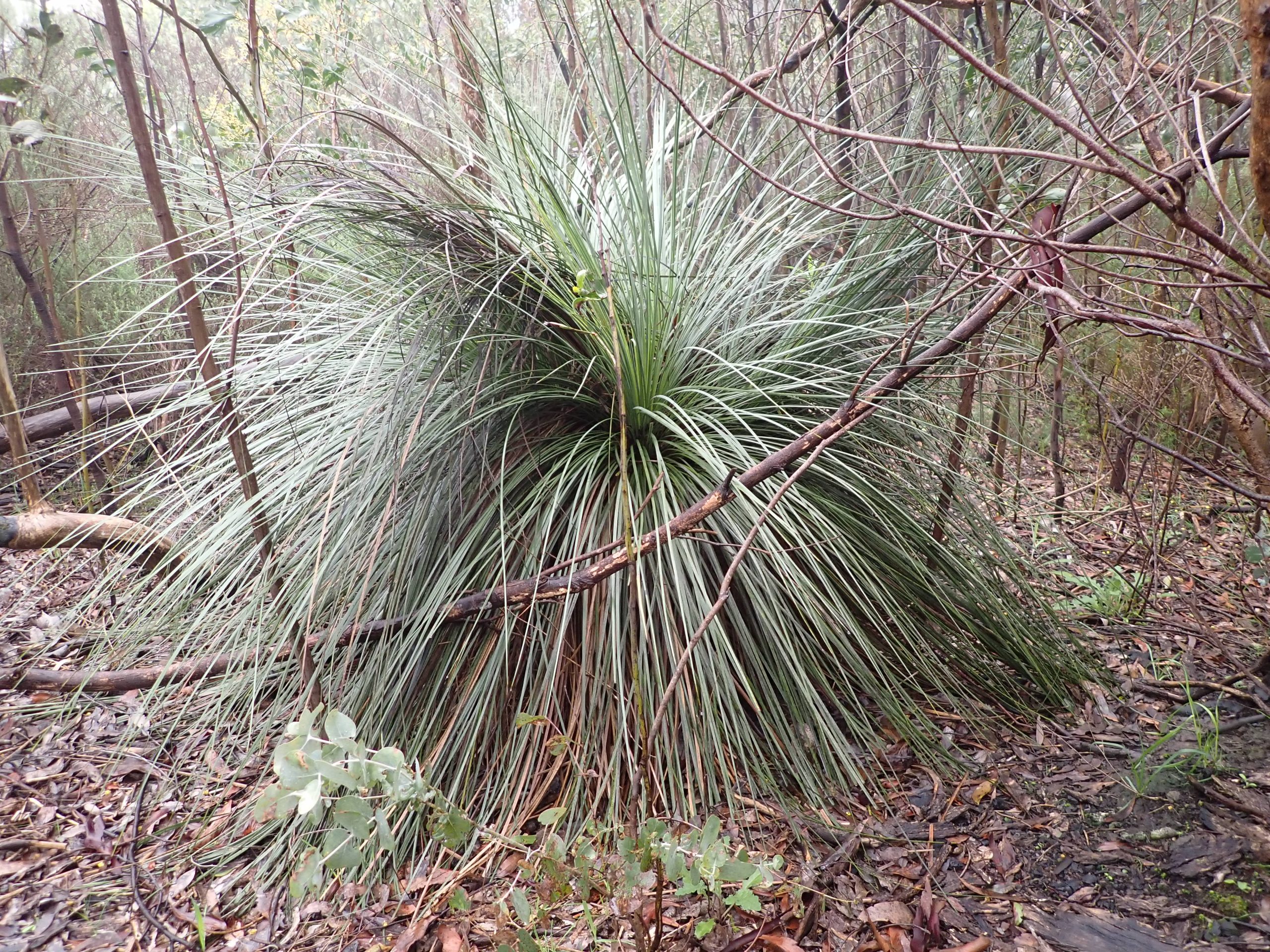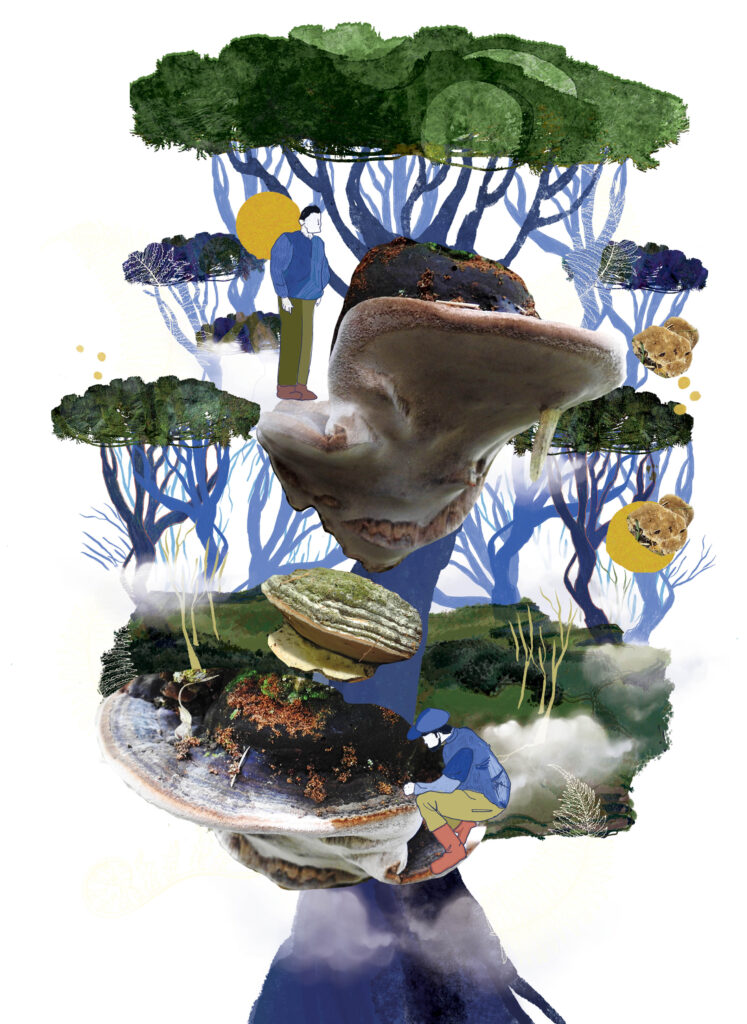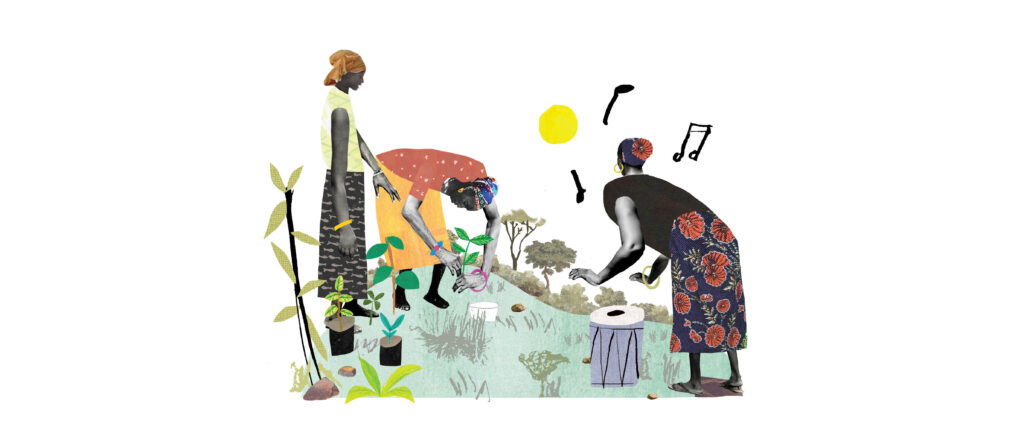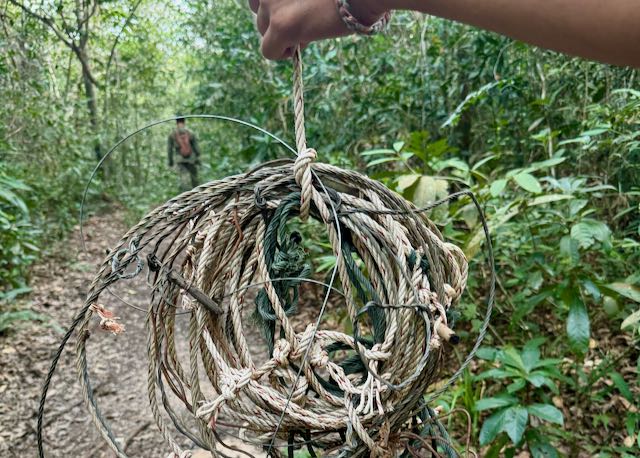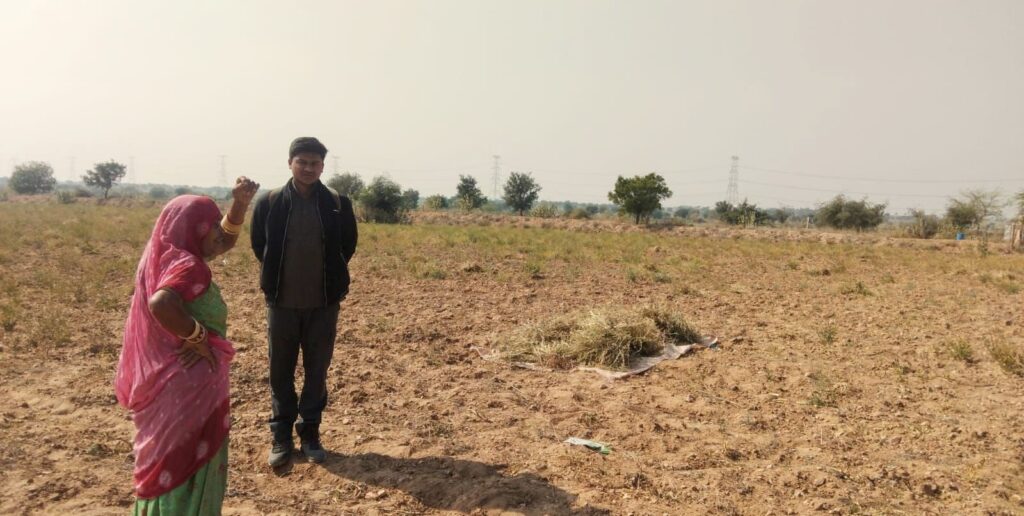Wrapped up in blankets and equipped with a cup of smoking hot chocolate, I sent Deb out into the pouring rain. It was the highest mean rainfall for June in the Adelaide Hills, South Australia, in 20 years.
Deb Frazer is a brave woman. She had already spent the hottest summer and coldest winter days and nights measuring the temperature under grass-trees—Xanthorrhoea semiplana subspecies (ssp.) semiplana. Much research has examined the microclimates of different natural shelters, but the effect of downpours has been generally overlooked.
Yet, wetting affects the insulation of bird and mammal coats and halves thermal resistance. Research on livestock has shown the terrible impacts of wetness in the cold, leading to death. The South Australian rainy season in the Mediterranean climate belt occurs in winter, and can get quite cold.
We generally assume that when it is cold and raining, animals will seek shelter. And without a second thought, we turn on the kettle as we settle in front of a bowl of soup.
But where do animals seek shelter? Shelter is an essential resource, and should be part of high-quality, well conserved habitats. Rock structures, tree hollows, and burrows protect animals from extreme weather. It turns out that grass-trees, Australian icons, can join the list of precious shelters at least in some of the ecosystems in which they occur.
Australia has 29 species of grass-trees in the genus Xanthorrhoea (family Asphodelaceae) distributed across most parts of the country. They have a long association with Aboriginal history, serving various purposes across different Indigenous groups. Also called yaccas, they are known to host a diversity of vertebrates and invertebrates. They feature long skirts of curving leaves, and their nectar-rich flowers are produced at the top of stupendous, long wooden scapes. While some species grow trunks over hundreds of years, others remain close to the ground.
Thermal, waterproof refuges
In X. semiplana ssp. semiplana found in the Adelaide Hills and Mount Lofty Ranges, the leaves die and dry up at the bottom of the canopies and stay in place, creating increasingly sturdy, thick, waterproof roofs curving to the ground. Our previous research showed that they host many native animals, including bandicoots and bush rats. Another student and I have observed echidnas resting under the thick canopies of grass-trees. But what is the thermal value of this plant as a shelter?
Deb and I found that on the hottest days of summer, the mean temperature under the thickest grass-tree canopies could be 20°C lower than in random spots around grass-trees or in ambient shade. The temperature at our four study sites remained extraordinarily stable under grass-trees, while external temperatures could exceed 40°C, which is believed to be lethal to several vertebrate species.
Although the differences in winter temperature between external and grass-tree canopy temperatures were much smaller, significantly warmer conditions were observed under grass-trees at night. In both summer and winter, the temperature variation was low under the grass-tree canopy. Temperature stability in winter could facilitate the maintenance of torpor—an energy-saving strategy used by many small vertebrates.
As Deb struggled through the downpour, she recorded soil wetness under grass-trees. She was amazed to find that under 80 percent of large and old grass-trees, the soil was perfectly dry, and partially dry under 20 percent of the other grass-trees. As expected, young grass-trees without full and thick skirts were nowhere near as good at providing shelter from the rain. Considering their exceptional habitat value, old grass-trees certainly play a role in determining the foraging times of animals, which are likely to use grass-trees when the weather is inclement.
The remarkable ability of at least some grass-tree species to protect a diversity of animals from deadly climatic extremes, combined with their anti-predator services (for example, large cats, foxes, and birds would have a difficult time penetrating the sturdy canopy of dead leaves), strengthens the mounting evidence that these plants are keystone species in Australia. Animals—whole populations of some species—can use their services to survive drastic environmental conditions. Grass-trees just need to be present along with their generous old skirts of leaves. Will they be?
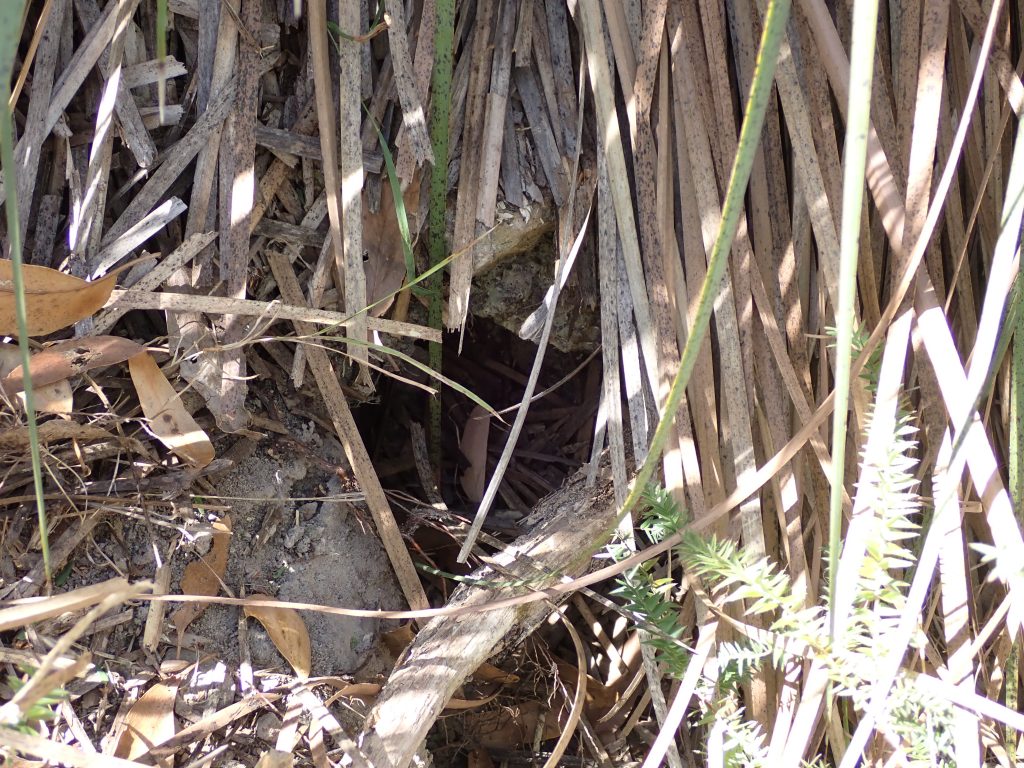
Some animals shelter directly under grass-trees, while others place their burrows under them
Grass-trees in peril
Historically, the two X. semiplana subspecies were extensively cleared for agriculture from many ecosystems, including in the Adelaide Hills and Mount Lofty Ranges, on the Yorke Peninsula, and on Kangaroo Island. They are now the victims of two other afflictions: a disease-causing oomycete (Phytophthora cinnamomi), recognised by the Australian government as a “Key Threat”, and an increasing incidence of fires.
Highly susceptible to the soil pathogen Phytophthora, grass-trees die en masse in infected areas, along with other native plant species, dramatically reducing the habitat for local animal communities. Infections are facilitated by human, vehicle and animal passage, and fires. Fires can thus affect grass-trees negatively in an indirect way by increasing Phytophthora infestations, as well as directly with severe burns that end up killing the plants.
Although the resilience of grass-trees to bushfires is well known, it may be overestimated according to recent research. Moreover, even if grass-trees are not killed by fires, their old, thick skirts of dead leaves burn, leaving no shelter for animals in post-bushfire environments.
As South Australia becomes hotter and dryer with the changing climate, it burns more easily. People are understandably scared. The bushfires of 2019–20 ravaged widespread areas in Australia, including South Australia. With the support of part of the community, government organisations have been involved in conducting extensive prescribed burns in native ecosystems, sometimes inaccurately called “fuel reduction burns” and even more inaccurately “ecological burns”. This feel-good terminology hides the negative impacts of frequent prescribed fires. Long-unburnt habitats, where most of our biodiversity thrives, are becoming a rare occurrence. Prescribed burning is often not backed by research, and ecological studies in other Australian ecosystems show that recently burnt habitats are drier, have more fuel, and burn more easily than long-unburnt ones.
Protecting grass-trees and their skirts goes a long way towards protecting Australian wildlife and biodiversity. It is not appropriate to “manage” the few areas of nature and wilderness we have left without research to support the radical strategies undertaken. This research should include long-term scientific monitoring, which is rarely carried out.
As we sip hot chocolate by the heater in the cold, rainy winter and sleep in the cool air conditioning on 45°C days, shouldn’t we also protect the grass-trees from our actions, the very plants that provide many of our animals a cosy home with a solid roof?
Further Reading
Petit, S. and D. S. Frazer. 2023. The role of grass-tree Xanthorrhoea semiplana (Asphodelaceae) canopies in temperature regulation and waterproofing for ground-dwelling wildlife. Pacific Conservation Biology 29(5): 445–455. https://doi.org/10.1071/PC23014.
